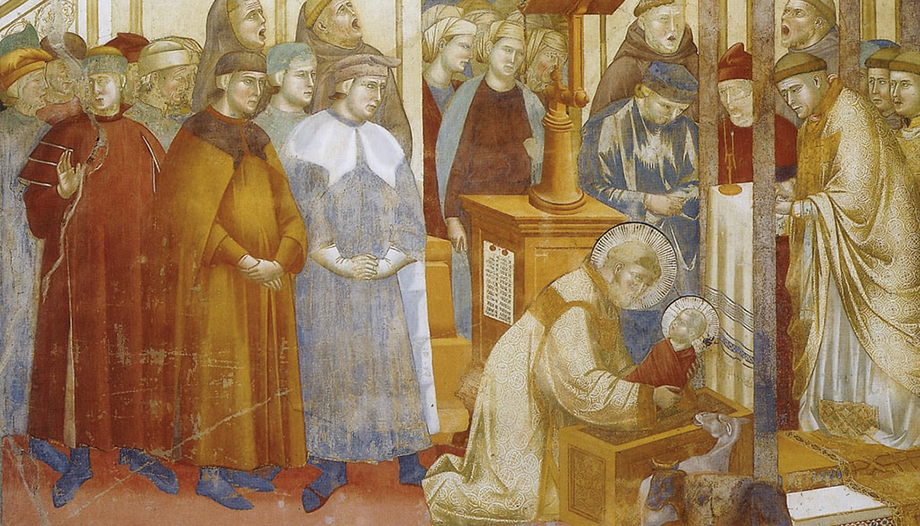If I don't see it, I don't believe it. With this phrase the materialism that surrounds us shakes off any reference to transcendence. But what if it were possible to see God with our eyes? St. Francis of Assisi considered it and succeeded.
Thomas of Celano recounts, in the first biography written of the saint, that in the year 1223, while he was near the Italian town of Greccio, he asked a certain John, a noble man of good reputation, to prepare a manger to celebrate Christmas so that he could contemplate the scene of the Nativity. His words were: "I wish to celebrate the memory of the child who was born in Bethlehem and I want to contemplate somehow with my eyes what he suffered in his disability as a child, how he was laid in the manger and how he was placed on hay between the ox and the donkey".
The chronicler describes how that Christmas night, the first nativity scene in history gathered a multitude of friars and families from the surrounding area, who came with candles and lit teas, and the joy with which the saint contemplated it and preached at the Eucharist that a priest celebrated on the manger itself. Between songs of praise from the improvised community, one of the attendees had an extraordinary vision. It is said that he saw "a child lying lifeless in the manger" and that, as Francis approached him, he awoke from his slumber. This vision is not without meaning," explains the author, "since the child Jesus, buried in the oblivion of many hearts, was resurrected by his grace, through his servant Francis, and his image was engraved in the hearts of those in love. At the end of the solemn vigil, all returned home filled with joy".
On the 800th anniversary of this unique event, the custom of representing the birth of Jesus so that children and adults can contemplate "with their eyes" the mystery of Bethlehem is still very much alive.
There are monumental and miniature nativity scenes, living and ceramic, popular and Neapolitan, static and mechanized...
In every house, in every establishment, in every parish, institution or confraternity there is a "John", like that first Greccio nativity scene maker, who, alone or with a group of collaborators, strives every year to install the best possible nativity scene.
In the apostolic letter "The beautiful sign of the manger" On the meaning and value of the crib, which I recommend everyone to reread at this time, the Holy Father recalled that "It is not important how the crib is prepared, it can always be the same or be modified every year; what counts is that it speaks to our life". And it is true that nativity scenes speak. They speak to us of the daily presence of God in the midst of our ordinary life, even though we often live far from Him. Their value as a resource for the transmission and renewal of faith is unquestionable.
Just the other day, I was trying to solve one of my children's doubts about what heaven would be like. And it is really hard to imagine that "contemplation of God" of which the Catechism speaks to us. "What a bore to see God all day long!" -the child said to me-. Looking for an answer, my gaze then stopped on the crib that was already set up in the living room at home, and I noticed the joy of the Virgin, St. Joseph, the angels, the little shepherds, the kings... They were all full of joy contemplating the child God.
-Imagine you are in Bethlehem, sleeping in the open," I said, "and suddenly a choir of angels appears to you and announces that the baby Jesus has been born. Would you go or would you not go to see him because you find it boring?
-It would be awesome. I'd go running," he replied.
-Well, imagine heaven like this. A place where, every day, you can witness an extraordinary event that fills you with joy. A place where kings and the poor share the same destiny and the same desire: to be close to God, as close as possible and for as long as possible, because getting bored... Do you get bored watching a baby, your cousin for example?
-I could play with her for hours, as funny as she is.
-Because a bitter old man wouldn't think of creating the Universe to share his life with you!
As we went along, the conversation made me realize even more deeply how Bethlehem is a reflection of the ultimate realities, for it also shows us the hell of Herod, decrepit and sad for not having wanted to accept the good news that is being given to him. There on the top of his castle he has only himself and his cruelty, far from communion with God and with men.
So, once again, St. Francis has done it again. That child asleep in a very deep sleep has risen thanks to him to bring me, 800 years later, a new teaching, a new hope. And simply by contemplating some clay figurines. Seeing is believing.
Journalist. Graduate in Communication Sciences and Bachelor in Religious Sciences. He works in the Diocesan Delegation of Media in Malaga. His numerous "threads" on Twitter about faith and daily life have a great popularity.








